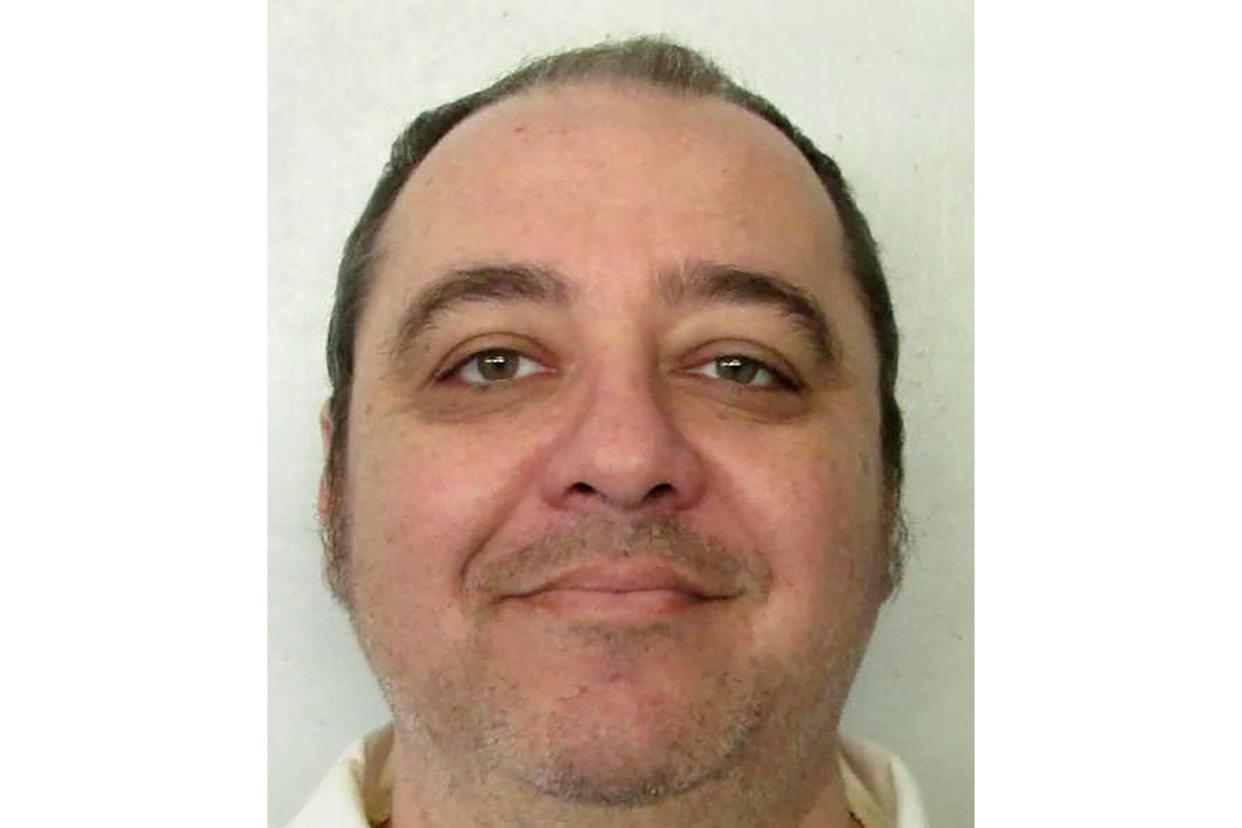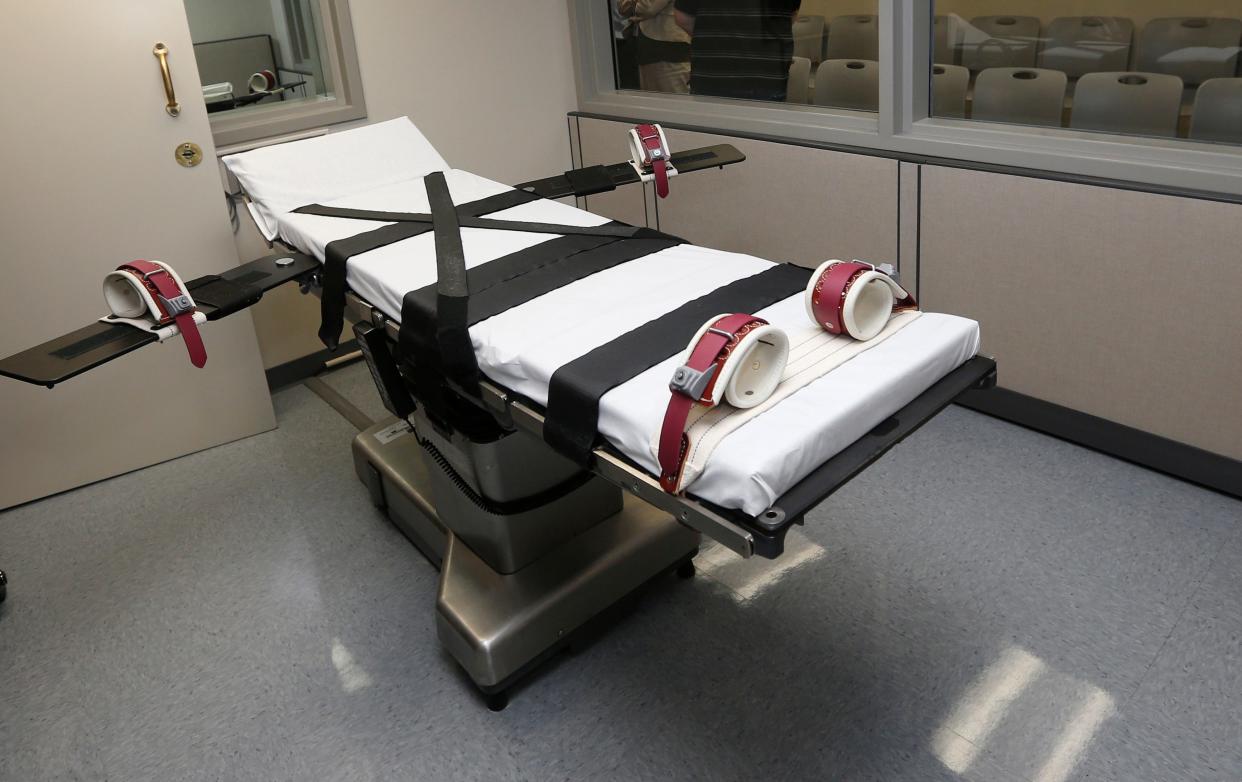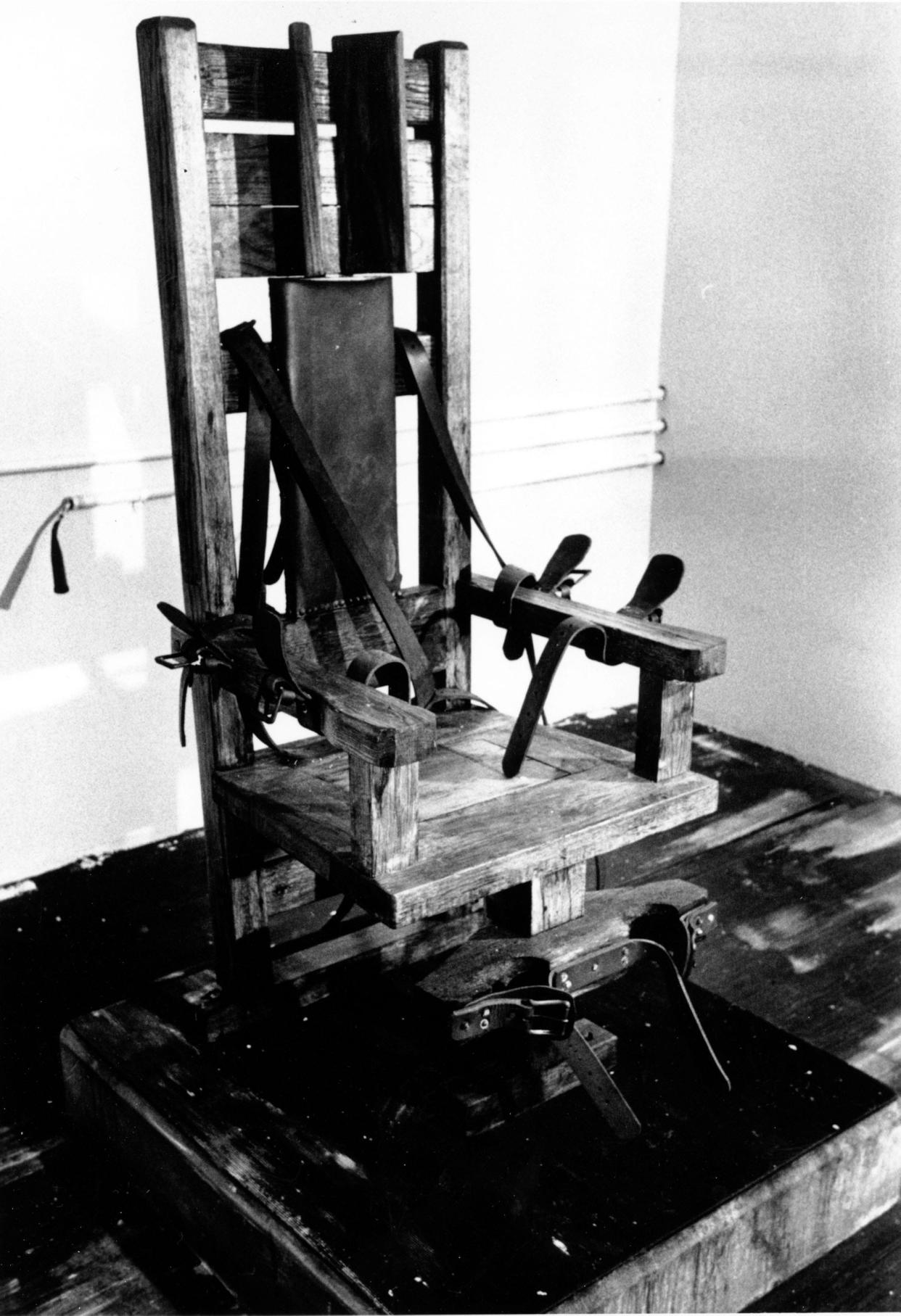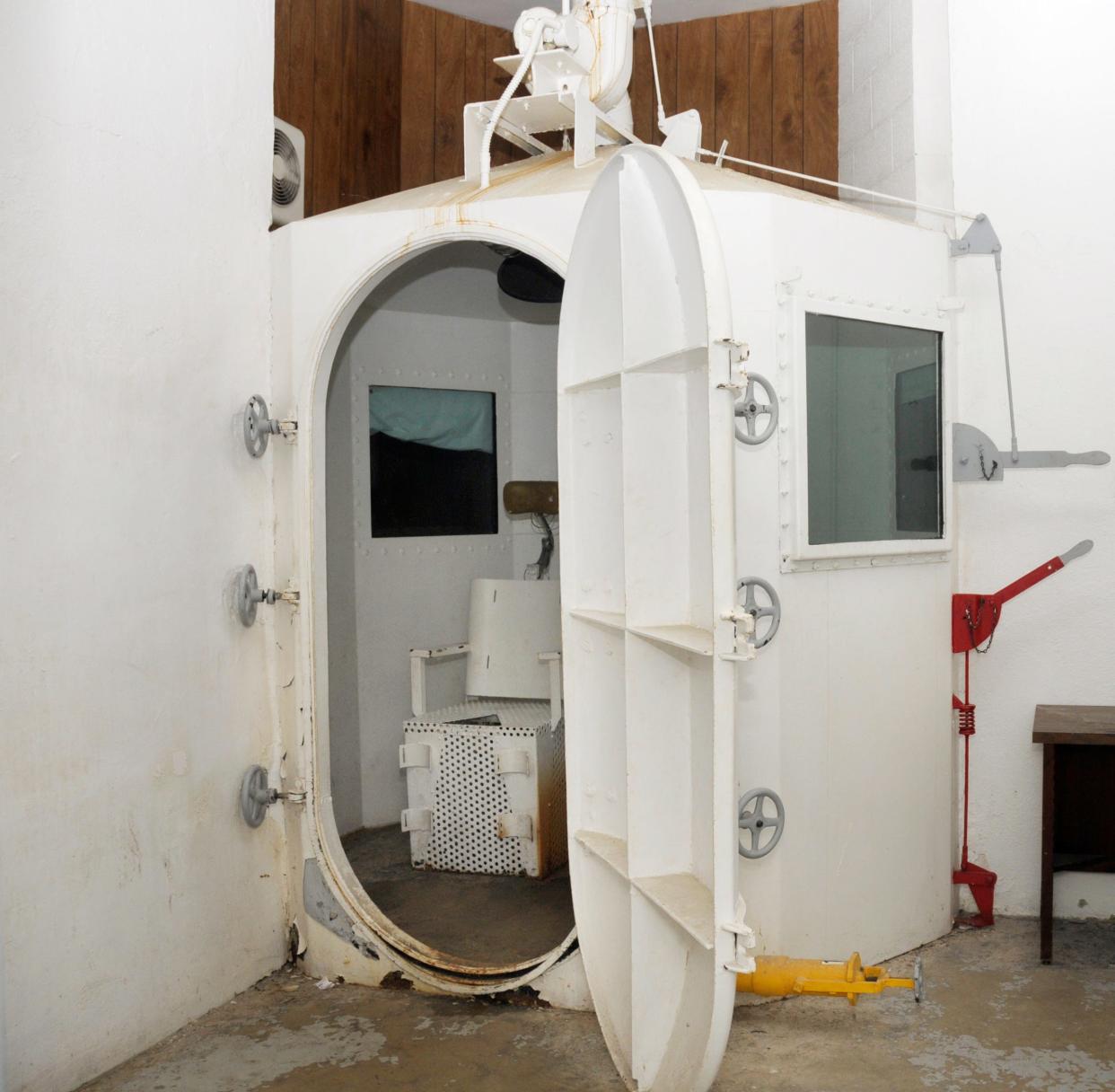Alabama executes killer with nitrogen gas in controversial first-of-its-kind method
The state of Alabama executed convicted killer Kenneth Eugene Smith on Thursday in a first-of-its-kind execution using nitrogen gas to asphyxiate the inmate.
Smith, 58, was the first person in the U.S. – and likely the world – to be put to death by nitrogen hypoxia after a drawn-out legal battle over Alabama’s methods of execution. He was pronounced dead at 8:25 p.m. at a southern Alabama prison after breathing nitrogen gas through a full-face mask, according to officials.
The execution took about 22 minutes. Smith appeared to convulse and shake vigorously for about four minutes after the nitrogen gas apparently began flowing through his mask. It was another two to three minutes before he appeared to lose consciousness, all while gasping for air to the extent that the gurney shook several times.
In a final statement, Smith said: "Tonight, Alabama caused humanity to take a step backward." He thanked those who supported him through this process and his previous execution attempt.
Smith smiled through the mask and made the sign language sign for "I love you" toward the witness room. "Thank you for supporting me. I love all of you," he added.
Smith's final appeal was rejected Thursday evening by majority justices in the U.S. Supreme Court, opening the door for a controversial execution method that some experts have criticized as experimental and inhumane.
In a dissent, Justice Sonia Sotomayor called the new method of capital punishment “entirely novel,” noting that the state had already failed in its first attempt to execute Smith by lethal injection in 2022.
“Having failed to kill Smith on its first attempt, Alabama has selected him as its ‘guinea pig’ to test a method of execution never attempted before,” Sotomayor wrote. “The world is watching.”
After the Supreme Court's ruling, Alabama Gov. Kay Ivey said she would not exercise her clemency powers and directed the commissioner of the state Department of Corrections to proceed with the execution.
“The execution was lawfully carried out by nitrogen hypoxia, the method previously requested by Mr. Smith as an alternative to lethal injection," Ivey said in a statement. "At long last, Mr. Smith got what he asked for, and this case can finally be put to rest."
Killing a prisoner with nitrogen is the latest attempt to effectively and humanely administer capital punishment following an array of botched executions, experts say. Some methods are now considered too gory; others became public spectacles – recent attempts have often simply not worked or inflicted needless suffering.
Experts say the repeated problems often happen because the people and companies who are most qualified to plan a pain-free method of capital punishment won’t do it, due to ethical concerns.
Nitrogen hypoxia is the latest capital punishment method of six that the U.S. has introduced, each of the previous methods bringing its own disastrous results, Deborah Denno, a Fordham University law professor and the founding director of the Neuroscience and Law Center at Fordham Law School told USA TODAY.
Smith, who was one of two people to receive the death penalty for the 1988 murder-for-hire plot of a preacher’s wife, chose nitrogen gas for his execution after a previous attempt at killing him by lethal injection failed. In November 2022, Smith suffered for hours as executioners tried to find a vein to administer the lethal drugs before ultimately calling it off.
“How many execution methods do we need in this country?” Denno said.
Experts say concern over Smith’s execution stems from a history of botched attempts, similarities between nitrogen hypoxia’s adoption and previous techniques, and the ethics of trying out a new method for the first time – in essence, experimentation on a human being.

US keeps changing execution methods
The death penalty has been part of society in every historical time period, and indeed, there are documented executions in this country dating back to colonial times, according to the Death Penalty Information Center. Firing squad and hanging were the earliest methods in the U.S., modeled after established methods in Britain and throughout Europe.
The six methods the U.S. has officially adopted are hanging, firing squad, electrocution, lethal gas, lethal injection and nitrogen hypoxia.
Lethal injection has been the primary method on the books in the 27 states with the death penalty still in place since the 1970s when it was introduced; the first lethal injection was the 1982 execution of Charles Brooks in Texas. After executioners struggled to find a good vein due to Brooks’ drug use, it took him seven minutes to die, and witnesses said he exhibited signs of pain throughout, Denno said.

Despite the challenges with the first lethal injection execution, the method soon was preferred by states and the federal government. In some states, prisoners are able to choose between select methods approved by the state, and in some others, an alternate method can be used if lethal injection is unavailable or rendered unconstitutional.
Over the past few hundred years, the U.S. has adopted the various methods, done away with them, and brought some back as options again in a seemingly endless search for something better.
Part of the reason for the changes over time is due to the growing “discomfort some people were starting to feel with more graphic forms of execution,” said Robin Maher, the executive director of the Death Penalty Information Center.
That included “some pretty graphic executions, where it was clear that the person was experiencing a lot of distress and a lot of pain and suffering when they ultimately died,” Maher said.
States have continuously sought a more humane, less messy option.
But Denno argues the reasoning for the myriad execution methods doesn’t stop there. She said states are interested in preserving the institution of the death penalty; any challenge on the grounds of cruel and unusual punishment made to any particular type of execution could threaten the penalty as a whole.
“For the most part, most legislators and jurors and even the public want a humane method of execution,” she said.

Medical professionals' involvement in capital punishment is an ethical and legal mess
A major issue with lethal injections, and with other methods tried in the U.S., is that the process is largely concealed from the public. From the introduction and the development of different protocols, to the carrying out of the actual executions, how much medical professionals are involved is unclear.
According to Elisabeth Armstrong, a bioethics professor at Colorado Christian University, the overwhelming consensus by the medical community is that doctors are ethically prohibited from being involved in capital punishment. Still, some medical professionals believe that if executions are going to happen, it’s their duty to help reduce as much suffering as possible. She said most states that use the death penalty shield the involvement of doctors or pharmaceutical companies, protect doctors from retribution for their involvement – and some might compel doctors to participate.
Meanwhile, the American Medical Association says “as a member of a profession dedicated to preserving life when there is hope of doing so, a physician must not participate in a legally authorized execution.”
Even so, Armstrong said doctors and other medical professionals might be tasked with assessing a prisoner’s mental competence, examining and monitoring vital signs of a prisoner, certifying their death or even procuring their organs.
Ethical issues involved in executions abound, Armstrong said, because of doctors’ duty to avoid unnecessary harm and the violation of the autonomy of people being executed. One of the chief concerns for Armstrong is that “methods that have not been tried pull physicians into experimenting on people.”
“It violates basically every vital ethical principle we have, and every commitment we make as medical professionals to provide hope and healing,” she said.
Doctors’ and pharmaceutical companies’ refusal to go near executions results in underqualified and minimally trained staff being left in charge of carrying out an execution, Denno said.

Ethical concerns, botched executions plague capital punishment in US
Another reason for the seemingly endless search for different ways to put prisoners to death is the high rate of snags experienced during the process, and the outright failures. These botched executions raise concerns about whether the methods are humane, and bring scrutiny to prisons overseeing them.
In New York, Denno said, hangings became public spectacles, in one case in 1827 drawing such a crowd that a viewing stand collapsed, killing two onlookers. The public’s fascination became troublesome to lawmakers, who eventually took executions out of the public eye, setting the groundwork for a current process shrouded in secrecy.
The first electrocution in 1890 was botched when executioners struggled to regulate the electric chair, and caused William Kemmler’s hair and skin to burn, an effect repeated in executions as late as the 1990s, Denno wrote. Lethal gas, too, was adopted and eventually fell out of favor because of its torturous effects on prisoners and the likeness to the Holocaust.

Executions had also been doled out so randomly and unfairly – including with racial bias – that the U.S. Supreme Court put a temporary halt to the practice in 1972 until states could introduce new procedures.
Then came lethal injection a few years later.
“Lethal injection held out the promise that people who were being executed would just be very gently put to sleep and then executed without experiencing any of that graphic pain and suffering as we saw with other methods,” Maher said.
That didn’t end up always being the case. A three-drug protocol – one to sedate the prisoner, a second to paralyze them and a third to stop the heart – became the accepted lethal injection practice until the late aughts to the early 2010s, Denno said. That’s when supply issues caused a greater incidence of problems.
Pharmaceutical companies in the U.S. stopped producing the needed drugs, or refused to sell them to prisons for use in executions, Maher said, causing a “scramble” to find replacement sources.
The Death Penalty Information Center dubbed 2022 the “Year of the Botched Execution” after 35% of the 20 attempted lethal injections were botched due to the incompetence of executioners, failure of execution protocol or flaws in the protocol design itself. Three in a row were in Alabama, where Smith’s execution ultimately failed.
“Alabama has a really terrible track record of being able to carry out executions without mistakes occurring and without the consequential pain and suffering of the prisoner who's being executed,” Maher said.
Experts say nitrogen hypoxia likely won't fix the problem
States continue to struggle with accessing lethal injection drugs and growing public horror at botched attempts. In some cases, that means reverting to older techniques. Idaho, which had outlawed the firing squad as a method in 2009, brought it back in 2023 in case lethal injection becomes unavailable.
Since 2015, nitrogen hypoxia has been added as options in three states – Alabama, Mississippi and Oklahoma – without being tried.
Experts are concerned nitrogen gas “will be no better, and possibly worse, than any of the methods preceding it, including the lethal gas method using cyanide,” Denno wrote in a chapter in a forthcoming publication titled, “Six U.S. Execution Methods and the Disastrous Quest for Humaneness.”
Read more about nitrogen hypoxia and experts' worries here.
“Any state that chooses to use the death penalty has an obligation to use it in a constitutional manner,” Maher said. “So really it is the state's obligation to ensure that Mr. Smith does not suffer a painful, torturous death.”
Contributing: Marty Roney, Montgomery Advertiser
This article originally appeared on USA TODAY: Kenneth Eugene Smith execution uses nitrogen hypoxia: Here's why
